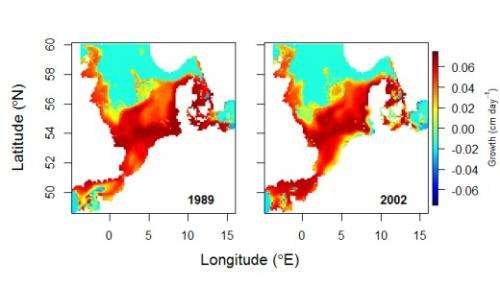Modeling used to predict age- and season-based distributions of North Sea fish

Climate change is causing the temperature of the sea to rise. This is having an impact on the distribution of sole and plaice species in the North Sea. Researchers from IMARES Wageningen UR and the Royal Netherlands Institute for Sea Research (NIOZ) have used EU funding to devise a model for predicting the age-based and season-based distribution of these flatfish in the North Sea.
In the sea, fish look for the places where they feel most 'at home'. The water temperature and food supply are vital aspects. Each species gravitates towards the location best suited to its physiological needs. The model that has been devised combines the physiology of the fish with data about their surroundings and environment. It goes some way to explaining the changes that have been observed in the distribution of sole and plaice in the North Sea. This knowledge will be used to study the effects of climate change on the sole and plaice population (in terms of location and size) and predict the effects that local or larger-scale changes in the environment will have on these fish.
Fish are cold-blooded. The rise in the temperature of the sea is expected to cause many species of fish to change their traditional habitat. This may have implications for the fishing industry. Plaice (Pleuronectes platessa L.) and sole (Solea solea L.) are two commercially important species that live in the North Sea. The researchers chose to focus on these two fish species because they have a preference for very different seawater temperatures.
Per species, the researchers studied differences in the quality of the natural habitat over two years involving differing temperatures and food conditions. They used two models: a dynamic energy budget (DEB) model for both species and an ecosystem model (ERSEM) for temperature and food conditions. Combining the results from both models gave the researchers enough data to analyse the quality of the natural habitat per fish per year in the North Sea.
Their findings largely correspond with the movements already observed, which are linked to the age of the fish and the season. The results also explain recent changes in fish movement, which can be put down to rising coastal temperatures.
The habitat maps compiled from the models give a clear picture of the quality of the habitat of the fish being studied. The maps show that a rise in sea temperature encourages growth among sole (a more southern species). Young plaice, however, do not do as well in warmer seawater. The habitat around the coast of the southern North Sea is warming up. This may explain a recent phenomenon whereby juvenile plaice tend to swim away from the coast.
IMARES researcher Lorna Teal has seen this phenomenon on a larger scale in the Wadden Sea. "The Wadden Sea is shallow and warms up faster than the North Sea. It's already a bit too warm for plaice. If the temperature peaks, even for a short period, the plaice are driven from the Wadden Sea. Sole thrive in higher temperatures than plaice, so a rise in temperature is having less effect on the sole."
The team from IMARES and the Royal Netherlands Institute for Sea Research (NIOZ) studied the conditions for both these species of North Sea fish. It is technically possible to use the models for other areas. "But we would obviously need the data on temperature and food conditions for those areas", says Teal.
The researchers intend to continue their research by studying whiting and herring in the North Sea. Environmental data on specific areas should also enable them to expand their models allowing them to study the impact of environmental changes on the various species of fish in a specific area.
The research was published on 3 September 2012 (in print and online) in Global Change Biology, one of the top six international scientific journals in the field of ecology.
More information: Lorna Teal, Ralf van Hal, Tobias van Kooten, Adriaan Rijnsdorp (allen IMARES) en Piet Ruardij (NIOZ), Bio-energetics underpins the spatial response of North Sea plaice (Pleuronectes platessa L.) and sole (Solea solea L.) to climate change, Global Change Biology, 03-09/2012.
Journal information: Global Change Biology
Provided by Wageningen University

















